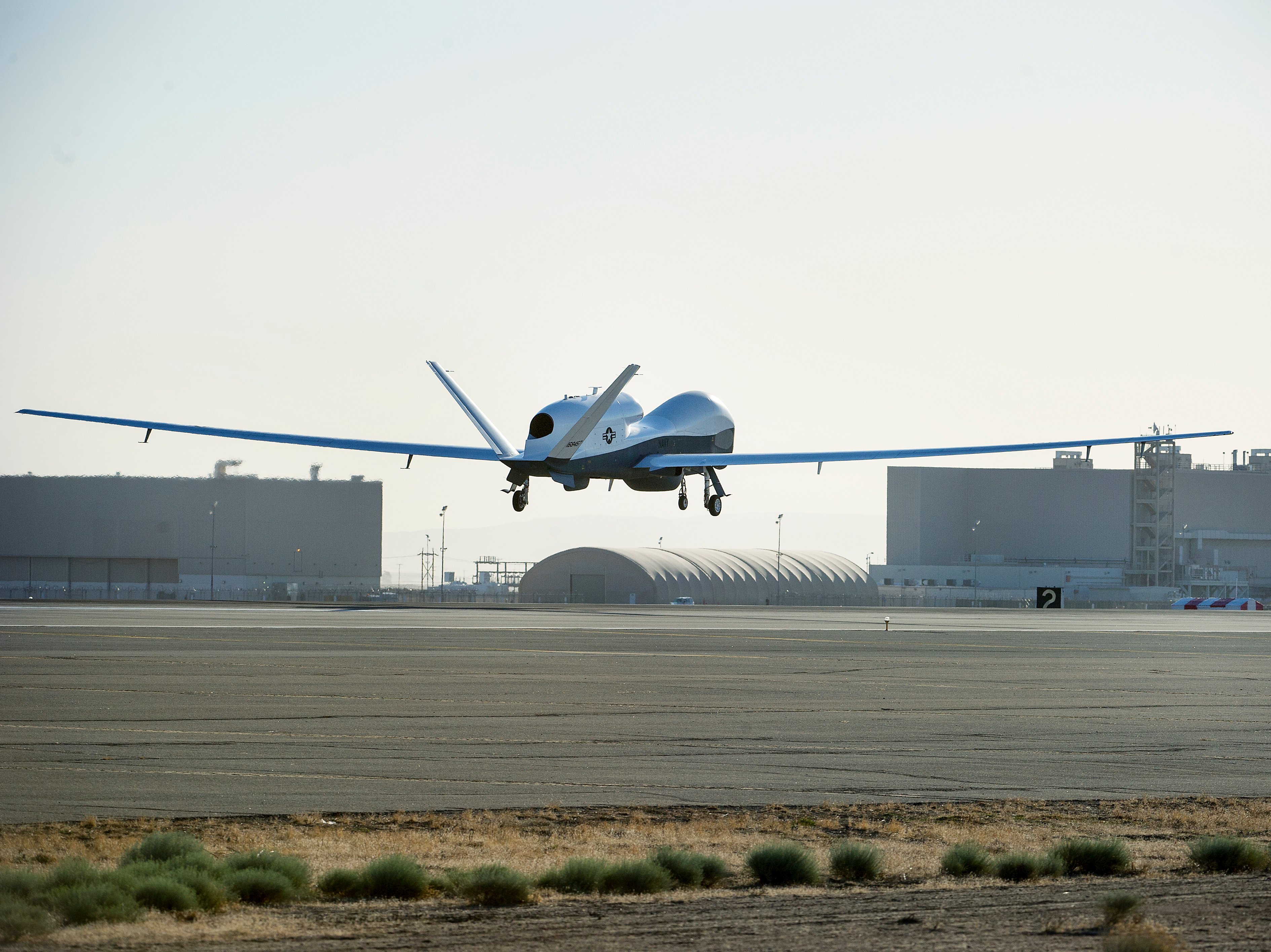
Testing for the Navy’s next generation unmanned maritime surveillance aircraft is proceeding ahead of schedule, according to officials at Northrop Grumman.
MQ-4C Triton, the Navy’s planned long range maritime surveillance aircraft, is closing in on completing the testing program to reach the designed 50,000 ft operational altitude – called envelope expansion, Northrop program manager for Triton, Mike Mackey, told USNI News in an interview on Feb. 17.
“We’ll finish that testing and begin to fly our second air vehicle earlier than planned on its first flight. We’re looking to do that at the end of March or the first part of April,” Mackey said.
Northrop and the Navy have been testing Triton since last year in California.
The aircraft is a variant of Northrop’s RQ-4 Global Hawk but modified with new sensors and beefed up wings for operations over the open ocean.
“The unique thing about a Triton, compared to a Global Hawk is a Global Hawk takes off and goes. Triton will go up and surveil and when it wants to, it has the ability to dip to come down to wherever you need to so you can get a further identification
with an [electro optical / infrared sensor] and we can stream pictures and video from that,” Mackey said.
Those dips can drop Triton from 50,000 feet down to 10,000 feet which puts stress on the wings that are designed for high altitude flight.
“The wings of a Triton, though they look exactly the same [as the Global Hawk], the structure inside of them is much more beefed up to support the dip and the turbulence,” Mackey said.
“Additionally to be able to that we need anti icing, capabilities, bird strike and lighting protection. These are all the things you don’t have in a Global Hawk that allow us to operate in that environment unrestricted.”
An early maritime variant of Global Hawk — Broad Area Maritime Surveillance Demonstrator (BAMS-D) — has been operating in the Middle East for five years.
“It went out for six months five years ago and now it’s in 61st month,” Mackey said.
In tandem with developing the airframe, Northrop Grumman is also working the centerpiece sensor for the Triton — the AN/ZPY-3 Multi-Function Active Sensor (MFAS).
“It’s got 360 degree capability and its and we’re during surrogate missions with that, we’ve done 32 so far,” Mackey said.
“The biggest challenge we have [now] is integrating that on the air vehicle for the very first time.”
The successful tests follow a delay in first flight of the Triton.
“We did have some problems getting to first flight, that delayed program some and budgets move with that,” Mackey said.
“You can look at it two ways, you could say ‘boy, it takes a long time to get to first flight with an unmanned rather than a manned [aircraft].’ There’s some truth to that. But once you’re there you’re in great shape and that’s the benefit we’ve seen going through envelope expansion.”
As testing progresses, Northrop expects to ferry the three test aircraft for additional testing to Naval Air Station Patuxent River, Md. beginning in June with all three aircraft to arrive at Pax River by August.
The Navy plans to buy a total of 68 Tritons. The service has plans to forward deploy five orbits with four Tritons per orbit.
Contingent on the budget, the service could enter limited rate initial production (LRIP) by 2016.





